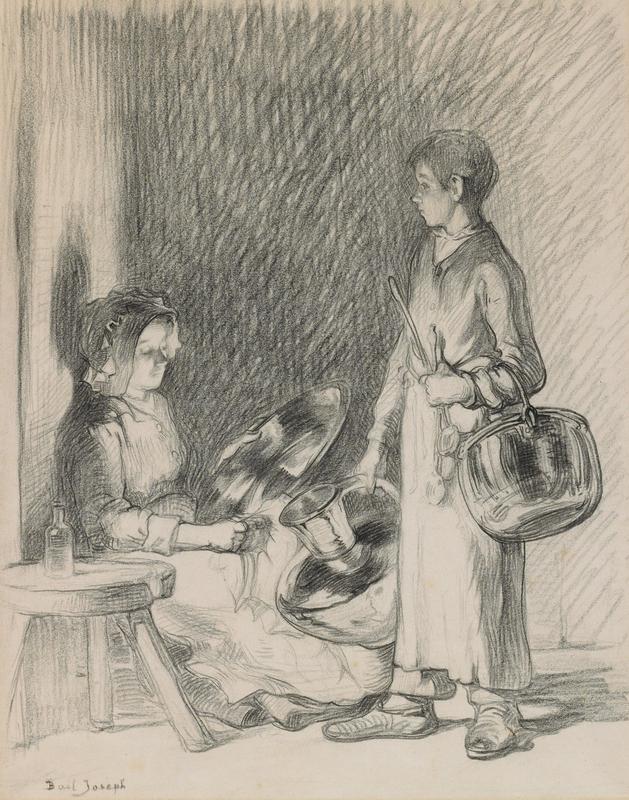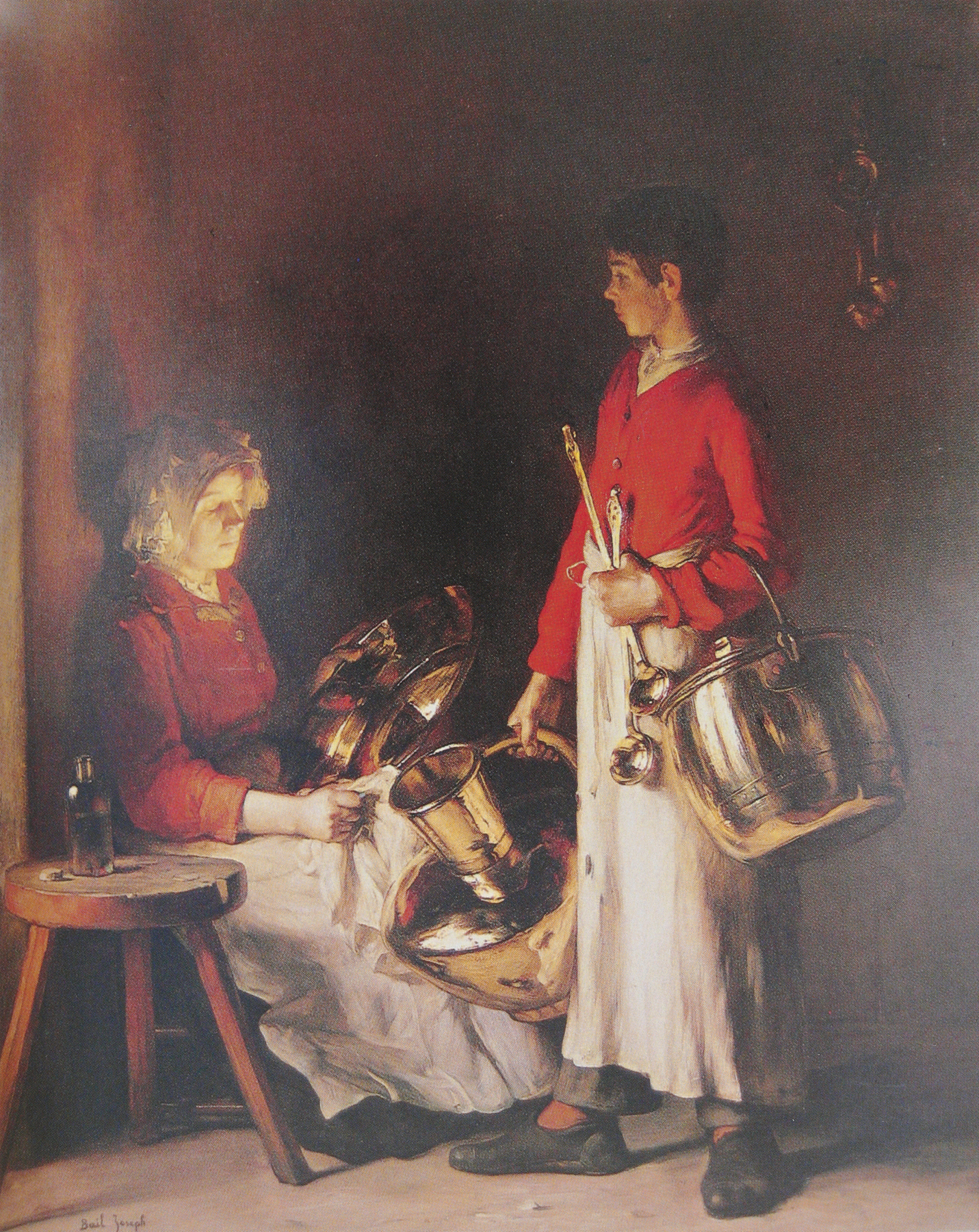
14. Claude Joseph Bail, Reflections on Copper Pots
| Artist | Claude Joseph Bail, French, Limonest, Lyon 1862–Paris 1921 |
| Title, Date | Reflections on Copper Pots, late 1880s |
| Medium | Graphite on cream wove paper |
| Dimensions | 12 3/16 × 11 5/8 in. (31 × 29.5 cm) |
| Inscriptions + Marks | Lower left: Bail Joseph |
| Provenance | [Douwes Fine Art, London, until 1988; to Weisberg]; Yvonne and Gabriel Weisberg, Minneapolis |
| Exhibition History | "Expanding the Boundaries: Selected Drawings from the Yvonne and Gabriel P. Weisberg Collection," Mia (2008) and Snite Museum of Art, Notre Dame, Ind. (2010) |
| References | Gabriel P. Weisberg, "The New Role of Genre and Its Public," in "Redefining Genre: French and American Painting 1850–1900" by Gabriel P. Weisberg and Petra ten-Doesschate Chu (exh. cat.), Dixon Gallery and Gardens, Memphis, Tenn., and other venues (Washington, D.C.: Trust for Museum Exhibitions, 1995), p. 62; Lisa Dickinson Michaux with Gabriel P. Weisberg, "Expanding the Boundaries: Selected Drawings from the Yvonne and Gabriel P. Weisberg Collection" (exh. cat.), Minneapolis Institute of Arts (Minneapolis, 2008), p. 31, fig. 14 |
| Credit Line | Promised gift of Gabriel P. and Yvonne M.L. Weisberg, Minneapolis |

As the second son of genre painter Antoine-Jean Bail (cat. no. 13), Claude Joseph Bail was well trained in the visual arts. Following early instruction from his father, he briefly studied under Jean-Léon Gérôme, a leading academic artist of the day. He then took up an investigation of earlier French masters such as Jean Baptiste Chardin, as well as the contemporary realists François Bonvin (cat. nos. 25–31) and Théodule Ribot (cat. nos. 161–167). His preferred subjects were nuns, cooks, and scullery maids. Yet compared to the down-to-earth style of, say, Ribot, Bail’s work possesses a tone both light and lighthearted.
With its gleaming reflections, the present drawing is such an example. A strong light enters the dusky room from the left, casting long shadows on the youthful polishers and causing the metal to glow. The sheet is preliminary to a large-scale painting (fig. 1) that Bail exhibited at the 1890 Salon,1 during the height of his fame and reputation. Like most academically trained artists, he made studies for larger works, often to see how a composition was progressing or to test ideas for new directions before committing to them in paint.
Bail’s career was prolific and lucrative. The artist exhibited regularly at the Paris Salon starting in 1878 and showed outside France as well, notably at the Carnegie Institute show in Pittsburgh.
GPW
Notes
The painting was reproduced by Jean Valmy-Baysse in Peintres d’aujourd’hui Joseph Bail: Sa vie, son oeuvre, no. 10 (Paris: Librairie Félix Juven, 1910). It was in a private collection in northern France in the 1970s and early ’80s and appeared in public at Galerie de Léthé, Paris, in 1988. The painting was also reproduced in Gabriel P. Weisberg, “The New Role of Genre and Its Public,” in Redefining Genre: French and American Painting 1850–1900 (exh. cat.), Dixon Gallery and Gardens, Memphis, Tenn., and other venues (Washington, D.C.: Trust for Museum Exhibitions, 1995), p. 62, fig. 2.10. ↩︎